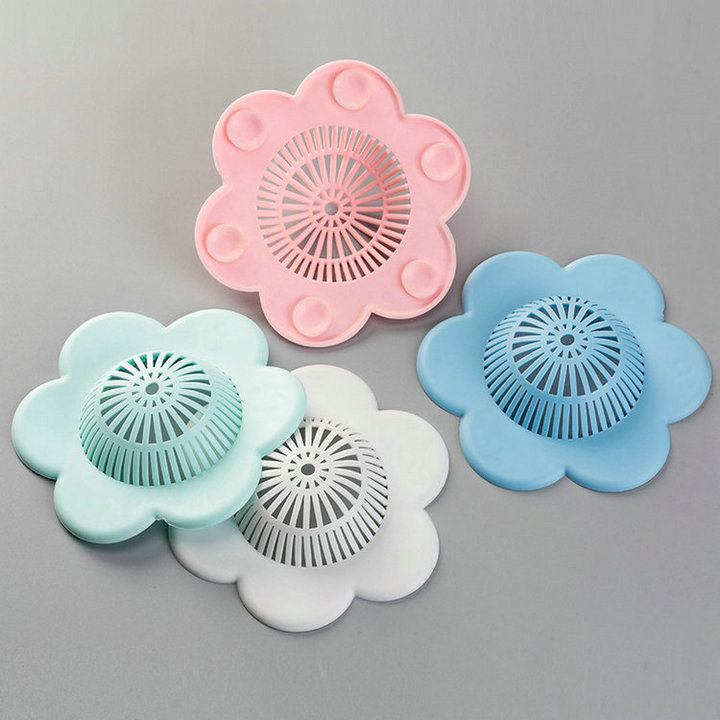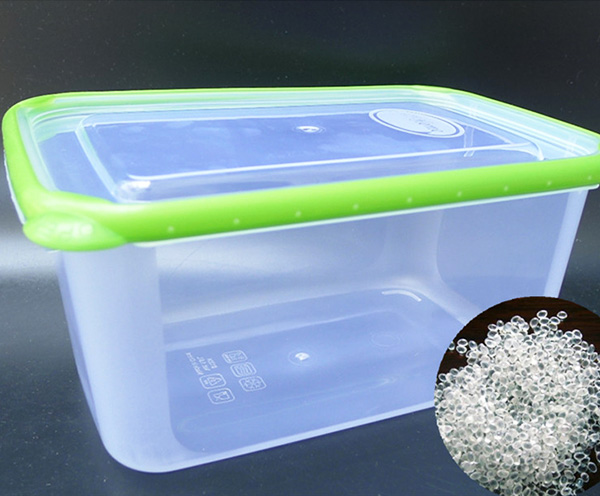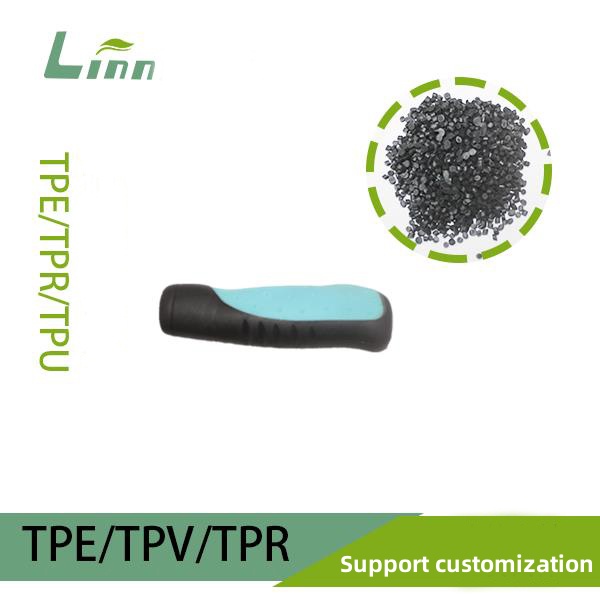A few years back, a friend called me up, buzzing with excitement about his startup project. He was designing eco-friendly, safe children’s tableware and asked, “Is TPR material safe for food-contact products? Could it pose any health risks?” That question took me back to my early days in the materials industry, navigating the complexities of material safety. As a materials engineer with over a decade of experience, I know how critical it is to choose the right material for food safety. Today, I’m diving deep into whether TPR can pass food-grade testing, hoping to shed light for anyone wrestling with this question.

What Is TPR Material?
TPR, or Thermoplastic Rubber, is a versatile material that blends the elasticity of rubber with the processing ease of plastic. It’s a type of Thermoplastic Elastomer (TPE), typically made from a base of SBS (Styrene-Butadiene-Styrene) or SEBS (Styrene-Ethylene-Butadiene-Styrene), mixed with plasticizers, fillers, and other additives. TPR shines for its soft texture, durability, low-temperature resistance, and ease of molding, making it a go-to for everyday products, medical devices, and toys.
But when it comes to food contact, you might wonder: Is this material really safe? Food-grade materials must meet strict safety standards to ensure no harmful substances leach out. Let’s break this down step by step.
Core Requirements for Food-Grade Testing
To determine if TPR can pass food-grade testing, we first need to understand what “food-grade” means. Food-grade materials are those that, under normal use, won’t release harmful substances into food. They must comply with international or regional safety standards. Here’s a quick look at some key standards:
| Standard | Region | Core Requirements | Common Test Items |
|---|---|---|---|
| FDA | USA | Materials must not release harmful substances, compliant with 21 CFR 177.2600 | Overall migration, specific substance migration, toxicity testing |
| LFGB | EU | Complies with (EC) No 1935/2004, strict migration testing | Overall migration, specific migration (heavy metals, plasticizers, etc.) |
| GB 4806 | China | Meets national food safety standards for food-contact materials | Overall migration, specific substance release, sensory testing |
These tests focus on ensuring:
No harmful substance release: No heavy metals, plasticizers, or toxic components.
Migration within safe limits: Substances released under high heat, acidic, or oily conditions must stay below regulatory thresholds.
No sensory impact: The material shouldn’t alter food’s taste, smell, or appearance.

Can TPR Pass Food-Grade Testing?
TPR’s Food-Grade Potential
Here’s the answer: Some TPR materials can pass food-grade testing, but not all TPR is suitable. The safety of TPR hinges on its formulation and production process. Standard TPR may contain plasticizers, stabilizers, or additives that could leach out in food-contact scenarios, posing safety risks. Only TPR specifically formulated to meet food-grade standards is suitable for such applications.
For instance, SEBS-based TPR is generally better suited for food-grade uses than SBS-based TPR. SEBS offers superior chemical stability and heat resistance, and its plasticizers are easier to control within safe limits. SBS-based TPR, on the other hand, may contain unsaturated bonds, which could release trace substances when exposed to heat or oily foods, increasing the risk of failing tests.
Factors Affecting TPR’s Test Performance
I once worked on a project where a client wanted to use TPR for the anti-slip handle of a baby bottle, but the material failed testing. After digging into it, we pinpointed the issues:
Formulation Components: The TPR contained plasticizers (like phthalates) that exceeded limits or included substances not permitted by food-grade standards.
Production Process: Impurities during manufacturing or overly high processing temperatures caused material degradation, leading to harmful releases.
Supplier Quality: Some low-cost TPR from smaller manufacturers lacked proper testing, resulting in inconsistent quality.
Conditions for Food-Grade TPR
For TPR to pass food-grade testing, it must meet these conditions:
Use Food-Grade Base Materials: Opt for SEBS-based TPR and avoid additives that could release harmful substances.
Obtain Authoritative Certifications: The material should pass FDA, LFGB, or GB standards, backed by valid test reports.
Strict Production Controls: Suppliers must maintain a contaminant-free production environment to prevent cross-contamination.
Real-World Case Study: TPR in Food-Grade Applications
Let me share a real example. A few years ago, I consulted for a company developing a TPR sealing ring for food storage containers. Initially, they chose a budget-friendly TPR, but it failed LFGB testing due to excessive overall migration. We advised switching to an SEBS-based TPR from a reputable supplier, complete with an FDA certification report and detailed composition data. The new material passed testing with flying colors, and the product hit the market successfully.
This experience taught me that choosing the right TPR and a reliable supplier is critical. If you’re considering TPR for food-contact products, don’t cut corners with untested materials.

How to Choose Food-Grade TPR Materials
Drawing from my experience, here are practical tips to help you select TPR that meets food-grade standards:
Partner with Qualified Suppliers
Choose suppliers with experience in food-grade materials and request detailed composition sheets and test reports (e.g., FDA or LFGB certifications).
Tip: Clearly communicate your product’s use case (e.g., contact with oily foods or high temperatures) so the supplier can recommend a suitable TPR formulation.
Scrutinize the Formulation
Verify that the TPR uses SEBS as its base and avoids high-risk plasticizers (like DEHP). If possible, request RoHS or REACH compliance documentation.
Conduct Pre-Testing
Before mass production, test the TPR in conditions mimicking real-world use (e.g., high heat or acidic environments) to avoid costly failures later.
Understand the Certification Process
If you’re unfamiliar with food-grade testing, work with third-party labs like SGS or TÜV. They’ll select the right standard for your product’s use case.
Key Considerations for Food-Grade Testing
From my work, I’ve seen many people struggle with the food-grade testing process. Here are some key points to keep in mind:
| Testing Stage | Key Considerations | Common Issues | Solutions |
|---|---|---|---|
| Material Selection | Ensure materials meet target market regulations | Supplier materials lack certification | Request FDA/LFGB/GB certification reports |
| Sample Testing | Simulate real-world use conditions (e.g., heat, oily foods) | Test conditions don’t match actual use | Clarify test conditions with the lab |
| Report Analysis | Confirm migration levels are within limits | Complex data in reports | Consult experts or labs for key metric explanations |
| Mass Production | Ensure production batches match tested samples | Batch-to-batch quality variations | Conduct regular quality checks |
Key Reminder: Standards vary by region. For example, the EU’s LFGB is stricter on migration limits than the FDA. If you’re exporting, research your target market’s regulations early.
Conclusion: TPR Is Viable for Food-Grade Use, with Care
To wrap up, TPR can be used in food-contact products, provided you select a formulation that meets food-grade standards and passes rigorous testing. From my experience, with the right material and supplier, TPR can excel in applications like sealing rings, anti-slip pads, or children’s tableware components.
If you’re unsure about using TPR for your project, start with these steps:
Define your product’s use case and target market.
Choose a reputable supplier with certified materials.
Test thoroughly before production to ensure safety and compliance.
I hope this guide clarifies your path forward. If you have more questions, feel free to drop them in the comments—I’m happy to help!

Related Q&A
1. Is TPR or silicone better for food-grade applications?
Both TPR and silicone can pass food-grade tests, but silicone typically outperforms in high-heat and chemical stability, making it ideal for prolonged food contact. TPR is more cost-effective and flexible for processing, suitable for non-high-heat uses like sealing rings or anti-slip pads. Choose based on your budget and product needs.
2. How can I verify if TPR has passed food-grade testing?
Check the supplier’s test reports to confirm compliance with FDA, LFGB, or GB standards. Reports should detail overall migration, specific substance migration, and be issued by reputable labs like SGS.
3. Is TPR safe under high temperatures?
Food-grade TPR can typically withstand moderate temperatures (e.g., below 100°C), but performance depends on the formulation. Consult your supplier and conduct high-temperature migration tests.
4. What if TPR fails food-grade testing?
Identify the failure’s cause (e.g., excessive plasticizers or contamination) and switch to a different formulation or supplier. If needed, explore alternatives like silicone or PP.
5. Is food-grade TPR expensive?
Food-grade TPR costs more than standard TPR due to specialized formulations and testing, but it’s generally cheaper than silicone. Costs vary by supplier and order volume.





